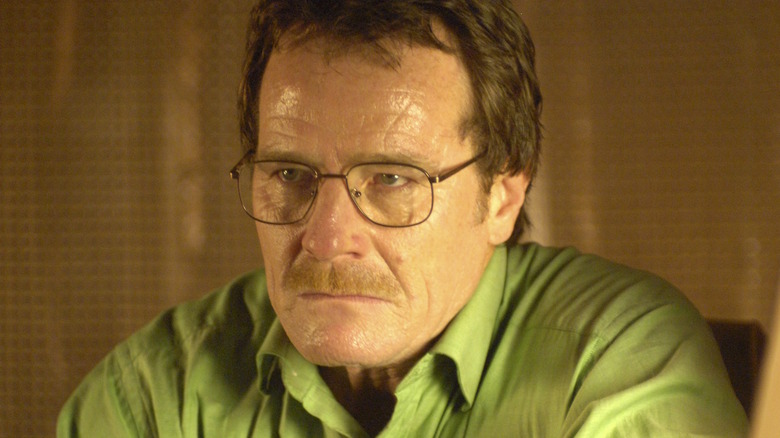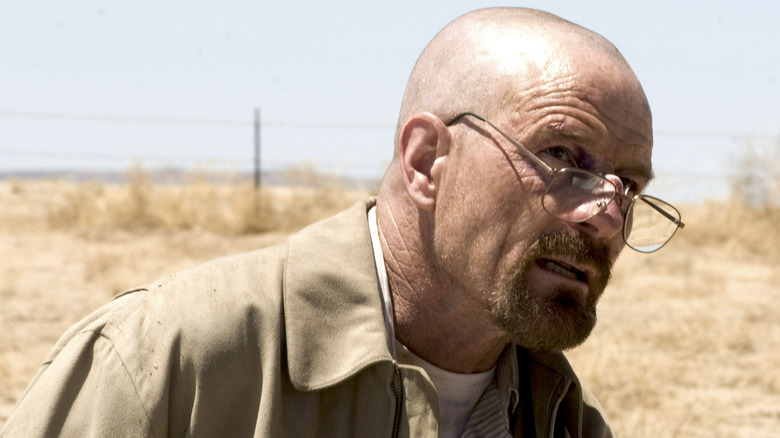Is Breaking Bad Based On A True Story?
AMC's "Breaking Bad" stands as one of the best series ever aired — winning numerous Emmys and garnering the Guinness World Record for the most critically acclaimed show of all time. The complex drama may have begun as an ailing man's quest to raise money before his death but the narrative spiraled into a dark world of increasingly dangerous characters.
The story made meth and its impact on all those around it a central theme — so much so that many viewers began to wonder if its central character and his life were grounded in reality. While the drug crisis remains a serious issue, there is no real-life Walter White; in fact, creator Vince Gilligan's idea for the series dates back to his time with another classic series — "The X-Files." Not everyone was as enthusiastic as Gilligan at first as several major networks passed on the series. Of course, truth is stranger than fiction, and there are some examples that would be right at home with White's dramatic journey.
Some criminals have a lot in common with Walter White
While it might be a work of fiction, very real events have drawn comparisons to "Breaking Bad." Some found inspiration in the series as others were well on their way to criminality with or without its airing. In a strange twist, there is a Walter White in the world of meth — even if his story has no connection to the AMC series. Vice uncovered his life in the world of crime and subsequent rehab as part of their "The Real" documentary series. The Alabama native made thousands of dollars a day thanks to the drug — it would send him through the legal system before attending a rehab center with religious roots. He went on to violate probation and was sentenced to 12 years in prison.
The real White is far from the only person whose life mirrors the Albuquerque-based drama. His name might not be Walter but Bradley Allen Rowland would likely make the fictional high school teacher proud. Much like Bryan Cranston's Walter White, The Henderson State University professor began manufacturing his own meth. A simple mistake saw him leak fumes into a school building; the resulting investigation led to him paying the University $150,000 and entering a program that dealt with substance abuse.

